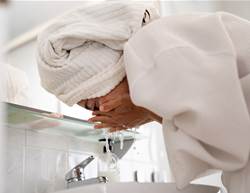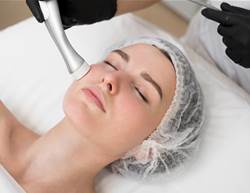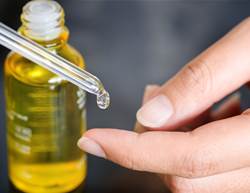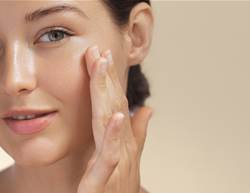Like any wrinkle or spot that comes with ageing, smile lines (also called laugh lines) are completely normal. Everyone has them — they simply become more visible over time, says board-certified plastic surgeon Dr Ari Hoschander. Prominence varies with genetics, facial expression patterns and environmental stressors. There is no single fix for removing smile lines, but dermatologists have practical ways to soften their appearance while boosting overall glow.
What are smile lines?
Smile or laugh lines refer to the nasolabial crease, says double board-certified dermatologist Dr Karan Lal—the fold that runs from the side of the nose toward the corner of the mouth. In younger faces it is mostly visible when smiling or laughing. With age, repeated movement, skin thinning, genetics and facial fat loss help the crease set in at rest.
Dermatologist Dr Leah Ansell adds that the muscle contractions involved in smiling also contribute to crow’s feet around the eyes. Smile lines are dynamic wrinkles, meaning they are accentuated when the face moves.
How to reduce the look of smile lines
There is no single fix to make smile lines vanish, but a mix of in-office treatments and good skin care can soften them and help prevent deeper creasing. Always discuss risks and suitability with a qualified dermatologist or plastic surgeon.
Anti-wrinkle injections
These injections temporarily relax the muscles involved in smiling, so dynamic creases show less. Results appear in days and typically last around 3–4 months. Possible effects include bruising, temporary weakness and asymmetry.
Dermal fillers
Fillers can replace lost volume along the nasolabial fold and smooth the transition from cheek to lip. Results are immediate and usually last several months to about a year, depending on product and placement. Risks include swelling, bruising, lumps and, rarely, vessel compromise, so expert technique is essential.
Laser resurfacing
Fractional and non-ablative lasers create controlled micro-injuries that trigger collagen production and thicken the dermis, which can make laugh lines less noticeable. Expect a series of sessions and brief downtime.
Surgical lift
When skin laxity is the main driver, a facelift or other surgical lift offers the most durable improvement by repositioning deeper tissues. It is invasive, requires recovery and is usually the costliest option.
Microneedling
By creating tiny channels in the skin, microneedling can stimulate collagen remodelling and improve texture. Evidence is stronger for scars and general fine lines than for deep nasolabial folds. Multiple sessions are typically needed.
Retinol and retinoids
“Retinoids have the strongest evidence for reducing fine lines and wrinkles,” says Dr Ansell. They stimulate collagen and thicken skin, but results rely on consistent use. “Not one month or two—usually after about three months of steady application skincare starts to show,” adds Dr Lal.
How to use well: apply a pea-sized amount at night, start low and slow to minimise irritation, moisturise after, and wear broad-spectrum SPF each morning. A prescription topical retinoid is the most potent option. Over the counter, look for retinol serums or creams, ideally paired with hyaluronic acid for comfort.
Skincare with peptides
Peptides help hydrate and act as building blocks for collagen. Formulas that combine peptides, niacinamide and ceramides can support the barrier and improve the look of fine lines over time. Small studies suggest peptide products may improve firmness and texture when used consistently.
How to prevent smile lines naturally
Wear sunscreen
The golden rule. Daily broad-spectrum SPF 50+ helps prevent UV-driven skin thinning, wrinkles and uneven tone. Reapply, and add hats and shade where you can. “Wearing sunscreen will prevent skin thinning from sun damage. This helps keep skin taut,” says Dr Lal.
Be wary of weight loss injectables
Injectable GLP-1 therapies and other fast weight-loss methods can reduce facial fat, which may make nasolabial folds more noticeable, especially with rapid change. Discuss pace and expectations with your doctor.
Skip the face tape
Tempted by anti-wrinkle face tape on social media? Dermatologists say give it a miss. The idea is to limit movement to prevent wrinkling, but you would need to wear it around the clock to see any effect. “These are a great way to do nothing,” says Dr Lal. Tape also does not address facial fat loss or skin thinning that occur with ageing.
Tools such as gua sha may temporarily de-puff and tighten, but results are not permanent, says Dr Lal. If you enjoy the ritual for relaxation and a short-term refresh, it is generally fine to continue.
Wear protective eyewear
Squinting deepens lines. Dr Ansell recommends sunglasses in bright conditions and reading glasses for close work to avoid unnecessary frowning or brow-furrowing.
Don’t stop smiling!
Lines should not steal your joy. “People will tell you not to smile, but that doesn’t work,” says Dr Lal. Skin thinning and fat loss happen with time. If smiling etches lines, consider them evidence of good moments and a life well lived.










